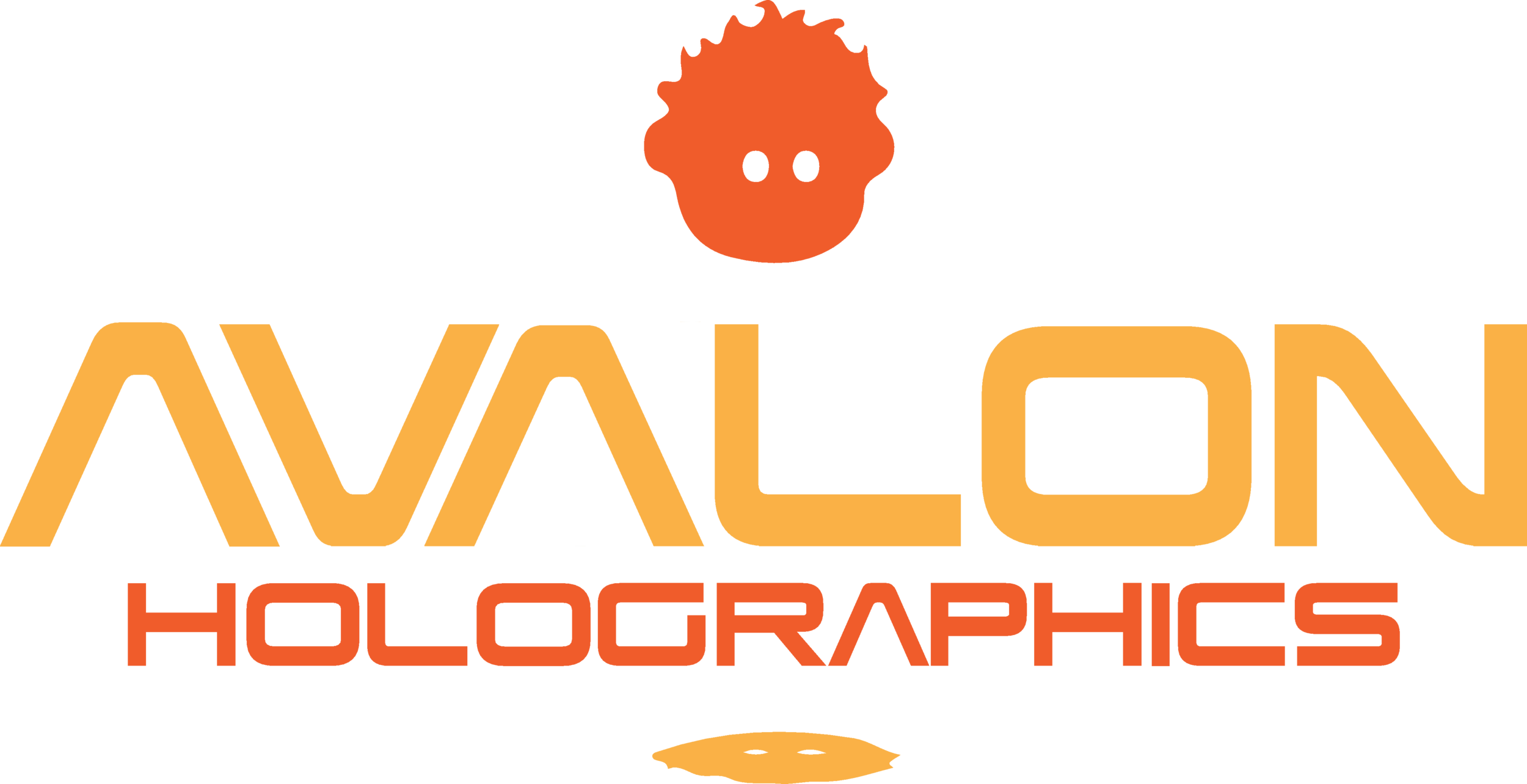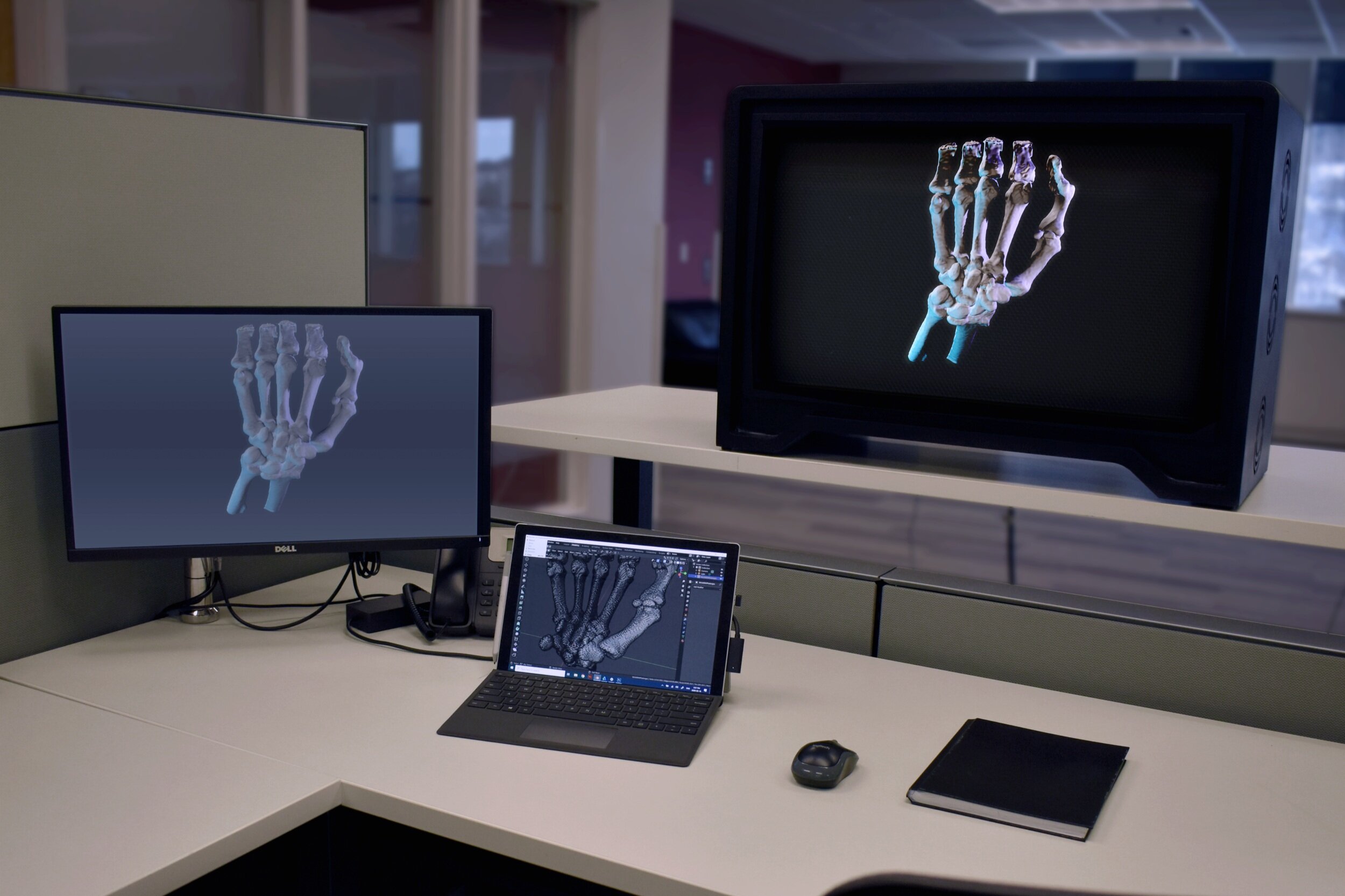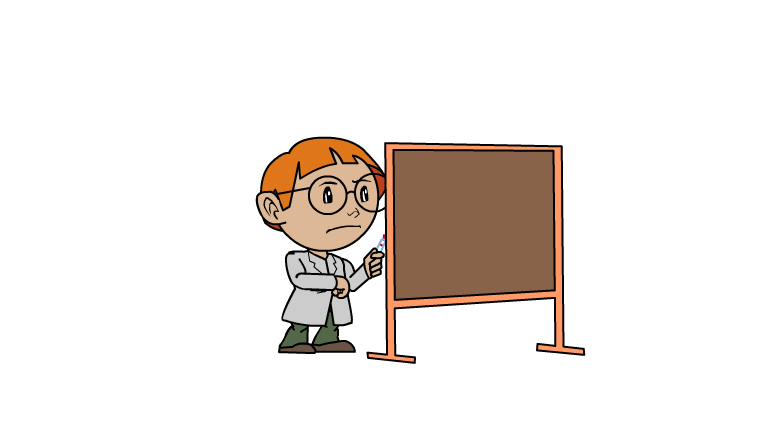SO, WHAT IS A HOLOGRAPHIC DISPLAY?
Holograms have fascinated us for decades.
From Marty McFly’s encounter with a 3D Jaws in “Back to the Future 2,” to Princess Leia’s holographic plea for help in Star Wars “Episode IV: A New Hope,” and Tony Stark’s incredible fabrication lab in Iron Man – Hollywood has fueled a futuristic, sci-fi dream of fully immersive holograms. As a result, what we’ve come to expect can sometimes be a far cry from what is truly possible.
So what is a holographic display? In essence, a holographic display requires the creation of light to fully, realistically replicate a real world experience. Initially discovered by mistake by Dennis Gabor back in 1948, he coined the term “hologram” from Greek origins meaning “full information” or “full record”.
A “light field display” is another way to describe a true, natural 3D display that provides a seamless, three dimensional viewer experience without the need for headsets or accessories. If a light field display is of sufficient quality, it can be described as a holographic display.
True holographic displays require control over light and a large amount of significantly smaller pixels than your average display could support. Normally, pixels control colour and intensity but do not control light direction. This is why images on a traditional 2D screen appear flat: both eyes, no matter where you look on the screen, see the same array of pixel colours and intensities, regardless of the angle (direction) that you view them.
If you can control the colour, intensity, and direction of light from a single point, you can create a holographic pixel or “hogel” - a cluster of directional pixels that can present a different colour and intensity from a single point on the display, based on the viewing angle.
After creating hogels, you need enough of them to form high fidelity images. Without enough hogels you may have depth, but the spatial resolution of the image itself will be too low and may appear blurry or distorted.
Once you have enough hogels for spatial resolution, the depth and Field-of-View (FoV) of the display hinges on maximizing the number of rays per hogel. The wider the viewing region, the more rays you need. And the more tightly packed those rays are, the more depth the display can show. You need at least one ray per degree and preferably many more. While different applications have different viewing requirements, the general rule is “bigger is better”.
For example, a 90° FoV requires at least 90 rays (in one dimension) to provide a few inches of depth. Assuming 90° full parallax FoV (horizontal and vertical), that’s 8100 pixels per hogel. However, to create more depth, 10’s or even 100’s of thousands of pixels per hogel are ideal.
So, how do you control all of those pixels at reasonable frame rates? Using traditional approaches, a high quality light field display requires the computing power of hundreds or even thousands of 2D displays, and the standard GPU simply can’t handle the load.
That’s where some complicated math and physics, high tech hardware, and custom software come into play - and that’s exactly what we do here at Avalon Holographics.
Learn more about our technology and get to know the Avalon Holographics team by following us on social media and keeping an eye on our news section!
Twitter: @AvalonHolo
LinkedIn: Avalon Holographics





